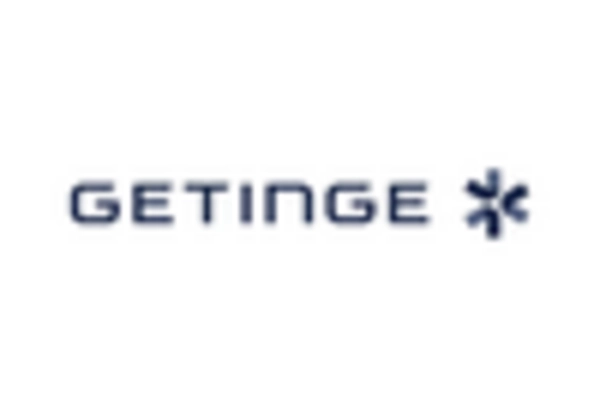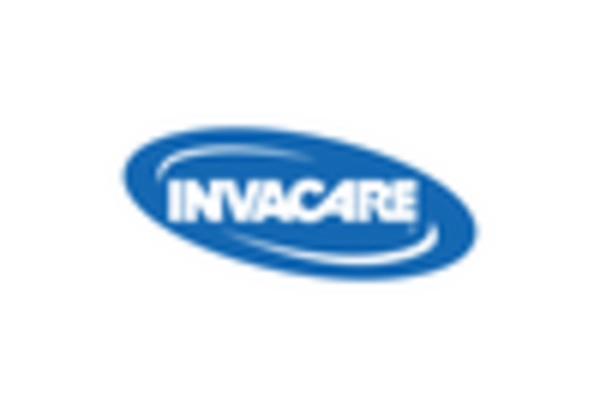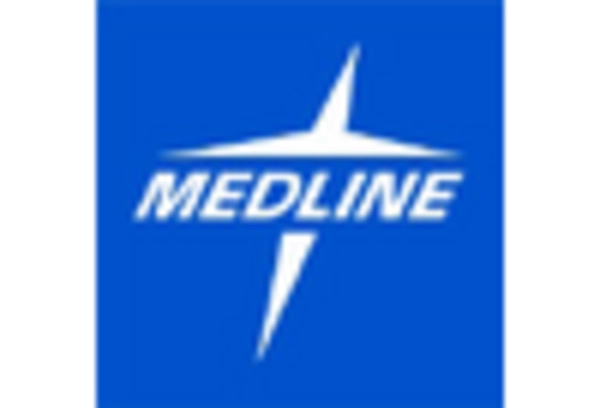Focus on Patient Safety and Comfort
Patient safety and comfort are paramount in healthcare settings, driving the demand for electrical hospital beds. These beds are designed to provide optimal support and facilitate easier patient handling, which is crucial for reducing the risk of falls and injuries. In the GCC, healthcare facilities are increasingly prioritizing patient-centric designs that enhance the overall patient experience. The electrical hospital-beds market is likely to benefit from this focus, as hospitals seek to invest in equipment that meets safety standards while also improving patient comfort. With a growing awareness of the importance of patient safety, the market for electrical hospital beds is expected to expand as healthcare providers adopt more advanced solutions.
Technological Integration in Healthcare
The integration of advanced technologies in healthcare is a pivotal driver for the electrical hospital-beds market. Innovations such as IoT connectivity, remote monitoring, and automated adjustments are becoming increasingly prevalent in hospital settings. These technologies not only enhance patient comfort but also improve operational efficiency for healthcare providers. The GCC region is witnessing a rapid digital transformation in healthcare, with investments in smart hospital solutions projected to reach $5 billion by 2026. This technological evolution is likely to create a favorable environment for the adoption of electrical hospital beds equipped with smart features, thereby propelling market growth. The emphasis on technology-driven healthcare solutions indicates a promising future for the electrical hospital-beds market.
Government Support and Regulatory Frameworks
Government initiatives and regulatory frameworks play a critical role in shaping the electrical hospital-beds market. In the GCC, governments are actively promoting healthcare reforms and investments in medical infrastructure, which includes the procurement of advanced hospital equipment. Policies aimed at enhancing healthcare quality and accessibility are likely to drive demand for electrical hospital beds. For instance, the GCC governments have allocated substantial budgets for healthcare development, with an estimated $30 billion earmarked for healthcare projects in the next five years. This financial support is expected to facilitate the acquisition of modern medical equipment, thereby fostering growth in the electrical hospital-beds market. The alignment of government policies with market needs indicates a conducive environment for future expansion.
Aging Population and Increased Healthcare Needs
The demographic shift towards an aging population in the GCC is significantly influencing the electrical hospital-beds market. As the elderly population grows, there is a corresponding rise in healthcare needs, particularly for long-term care and rehabilitation services. This demographic trend necessitates the adoption of specialized medical equipment, including electrical hospital beds, which offer enhanced comfort and support for patients with mobility issues. Reports suggest that by 2030, the proportion of individuals aged 60 and above in the GCC is expected to reach 20%, further driving the demand for advanced hospital equipment. Consequently, healthcare providers are likely to invest in electrical hospital beds to cater to this demographic, thereby fostering growth in the market.
Rising Demand for Advanced Healthcare Facilities
The electrical hospital-beds market is experiencing a notable surge in demand due to the increasing establishment of advanced healthcare facilities across the GCC region. As healthcare providers strive to enhance patient care, the integration of sophisticated medical equipment, including electrical hospital beds, becomes essential. This trend is driven by a growing population and an increasing prevalence of chronic diseases, which necessitate improved healthcare infrastructure. According to recent data, the GCC healthcare sector is projected to grow at a CAGR of approximately 10% over the next five years, indicating a robust market for electrical hospital beds. The emphasis on quality healthcare services is likely to propel investments in modern hospital equipment, which will positively impact the electrical hospital-beds market.

















Leave a Comment